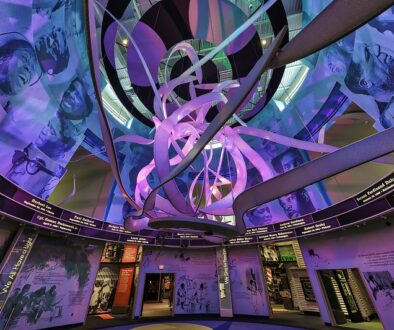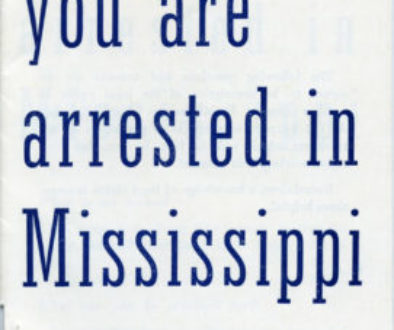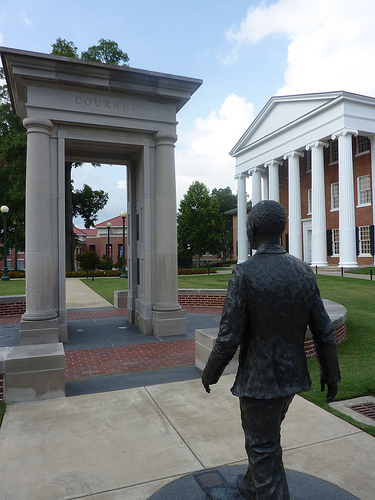How to visit the Emmett Till National Monument in Mississippi, site of the murder that sparked the civil rights movement
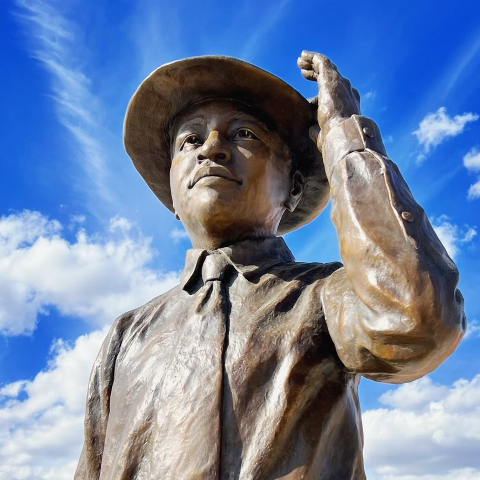
The murder of Emmett Till was the lightning strike that sparked the civil rights movement.
As the late John Lewis said, Emmett Till was his George Floyd. The 1955 kidnapping and brutal slaying of the 14-year-old boy shocked a nation after his mother Mamie Till-Mobley allowed Jet magazine to publish pictures of her son’s disfigured body.
Three sites associated with the notorious murder are now a National Monument that was established in July, 2023. Two of them – Graball Landing where Emmett’s body was recovered from the Tallahatchie River, and the Tallahatchie County Courthouse in Sumner, where his murderers were found innocent – are in Mississippi. A third location, the Roberts Temple Church of God in Christ site of Emmett’s funeral, is in Chicago.
Here’s how to visit the Emmett Till National Monument in Mississippi.
The National Park Service has ambitious plans to develop the sites, and you can expect exhibits and tours to be added, so check the monument’s website before visiting. To get the full picture, you may want to see other Mississippi sites associated with the crime as well.
Visiting these places will be disturbing, and at times confusing. But they’re crucial to understand what motivated civil rights foot soldiers and leaders over the following decades.
Visiting the Till sites is crucial to understanding the civil rights movement.
The murder took place in rural Mississippi, and even now the area remains sparsely populated with few services for visitors. Drivers will have to navigate dirt roads and may not see other travelers. Make sure you’re fueled up and have reliable GPS.

A crime that shocked the world
The trial of the men charged with the murder attracted international news coverage. When Roy Bryant and his half-brother J.W. Milam, were found innocent in court, it outraged the world.
To this day, Emmett Till’s killing still resonates across the nation.
In Washington, crowds line up silently in the National Museum of African American History and Culture to see Till’s coffin. It’s the emotional fulcrum of the museum, that leaves many visitors in tears.
In short, a visit to Emmett Till sites is crucial to understanding the violent racism that fueled the civil rights movement.
To learn the story, one can follow a trail linking Emmett Till sites in northwest Mississippi. While this area is isolated, it’s an easy stop between Memphis and Jackson, Mississippi. Along with the national monument sites, here are the other places to visit:
The Emmett Till Historic Intrepid Center (ETHIC), in the tiny town of Glendora, has the most comprehensive exhibits about the murder, including a mockup of Bryant grocery store, where Emmett allegedly whistled at a white woman, which led to his murder.
Other sites include the crumbling grocery in the tiny settlement of Money, and the larger-than-life statue of Emmett in Greenwood, near the corner of Howard and West Johnson streets.
An app offers help with navigation, or you can download a driving tour map here. The Emmett Till Memory Project even has a detailed 10-stop tour you can do on your own. (And if you’re in Chicago, you will want to consider the five-stop tour of Till sites there.)
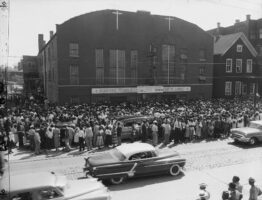
But because there are several competing theories about Till’s death, these tours can be overwhelming. And while it’s easy to get lost in the details, don’t lose sight of the larger picture: the brutal murder of a child.
Start at Money, Mississippi
There’s not much to see at Bryant’s Grocery Store & Meat Market, in Money, Mississippi.
If this spot looks empty and isolated, consider how it seemed to Emmett, a Chicago native who had come down to Mississippi to visit his relatives for two weeks. He arrived by train at Winona, Mississippi, where his grand uncle’s family picked him up and took him to the crossroads of Money, about 40 miles west.

According to testimony, Emmett, his cousins and friends were playing checkers outside of the store on the evening of Aug. 24, 1955. Emmett entered the store, where the owner’s wife, Carol Bryant, 21, was working, and purchased bubble gum. Although it’s claimed that Emmett grabbed or accosted the clerk, decades later Bryant said that the child didn’t touch her. However when she left the store that evening, it’s likely that Emmett whistled at her.
That was enough to seal his fate, leading to his kidnapping four nights later. Roy Bryant, and his half-brother, J.W. Milam, came to Till’s grand-uncle’s home on Dark Fear Road at 2:30 a.m., and seized the child in front of his family.
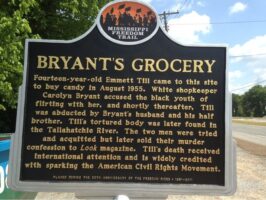
Bryant’s Grocery itself is now crumbling and covered with vines. In the 1980s, the property was purchased the Tribble family, which was related to a juror in Till’s murder trial. The owners have refused numerous offers to stabilize the building, asking for a reported $4 million to sell the property outright.
During the 1950s, the store served Black sharecroppers working the nearby cotton fields. Now visitors stop to see a Mississippi Historical Marker, and a partially restored gas station.
It’s located about 10 miles north of Greenwood, a city with its own civil rights history and site of many filming locations from the movie, The Help.
Nearby is the East Money Church of God in Christ cemetery where Emmett was almost buried. The grave had already been dug, but his mother intervened, insisting that her son’s body be returned to Chicago for a funeral and burial. Take a moment to consider how history would have changed if Emmett had been interred here in this isolated spot without the attention that came after the world saw his brutalized body in Chicago.
Murdered in Glendora
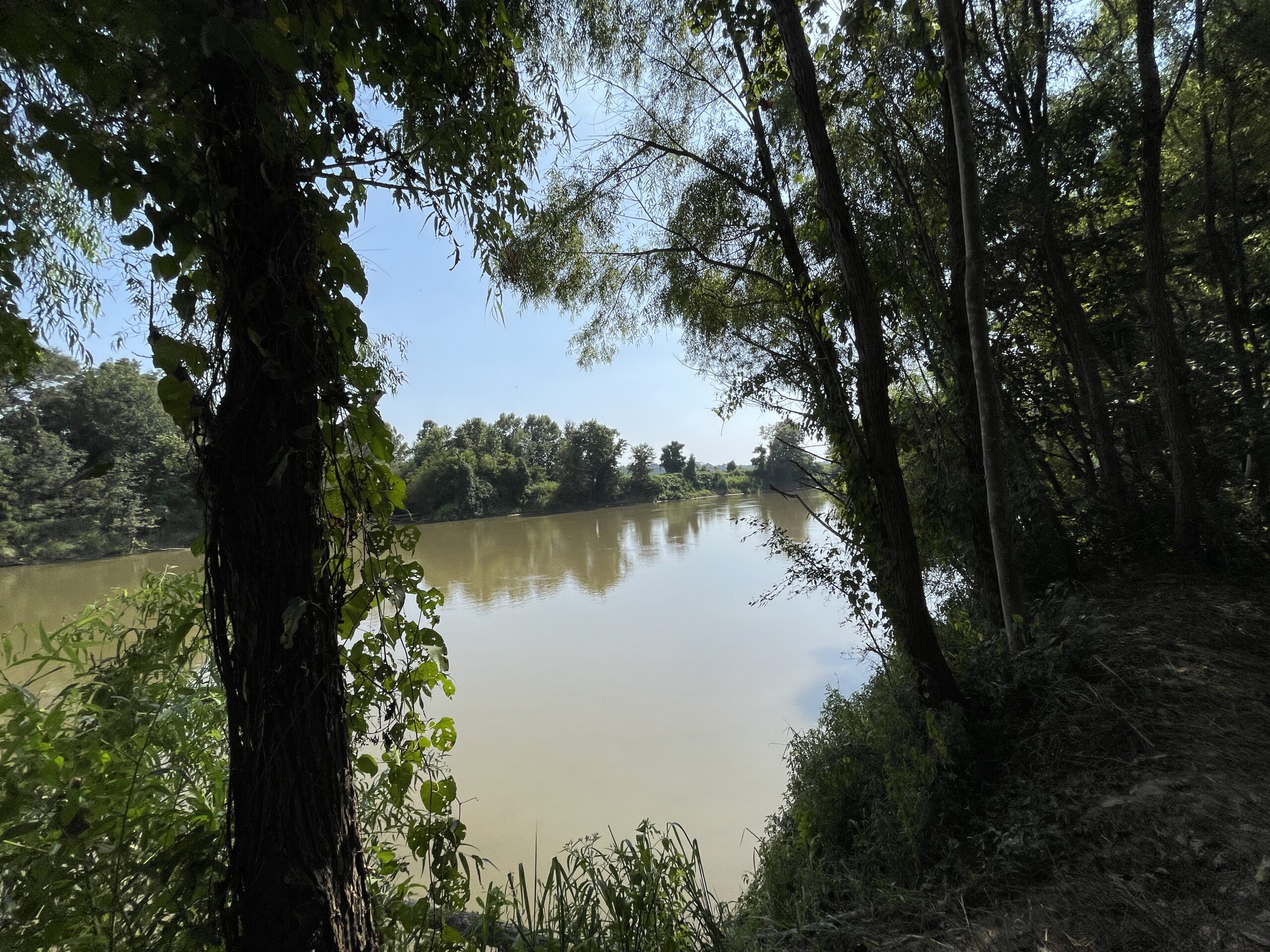
Like any notorious crime, many questions remain about Emmett’s killing.
It’s believed that the men beat the child, then took him to the Tallahatchie River near Glendora, where they shot him in the head. They stole a 70-pound cotton gin fan and then tied it to his neck with barbed wire and pushed him in the water.
Some accounts suggest several other men were involved in the murder, and that Emmett was tortured for hours before he was killed.
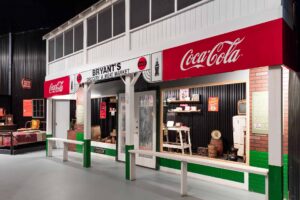
Today Glendora’s cotton gin building, where the fan may have been stolen, is home to the Emmett Till Historic Intrepid Center museum. Inside the Center, you can watch a film and tour exhibits, including a replica of Bryant’s Grocery. (The original doors of the grocery are in the Mississippi Civil Rights Museum in Jackson.) Until the National Park Service develops exhibits, the museum is the most extensive in the region.
From the center, it’s less than a 15-minute drive past cotton and soybean fields to Graball Landing, the lonely spot where Emmett’s body is believed to have been pulled from the water.
Usually historic markers themselves aren’t historic, but this one, tragically is. Over the years, the marker has been repeatedly vandalized and peppered with bullets. It has been the site of white nationalist rallies and where Ole Miss fraternity members posed for pictures holding rifles. The marker now at the river, erected in 2019, is protected with an alarm and said to be bullet proof.
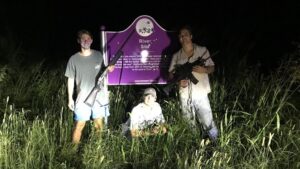

Getting there requires a drive along a lonely dirt road. Pull off the grass and walk down to the muddy river. Most days you’ll be the only one there, and the only sound may be crickets, cicadas and the occasional bird. This site of horror where a child’s mutilated body was recovered looks deceptively peaceful.
On trial in Sumner
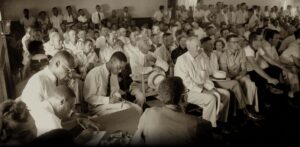
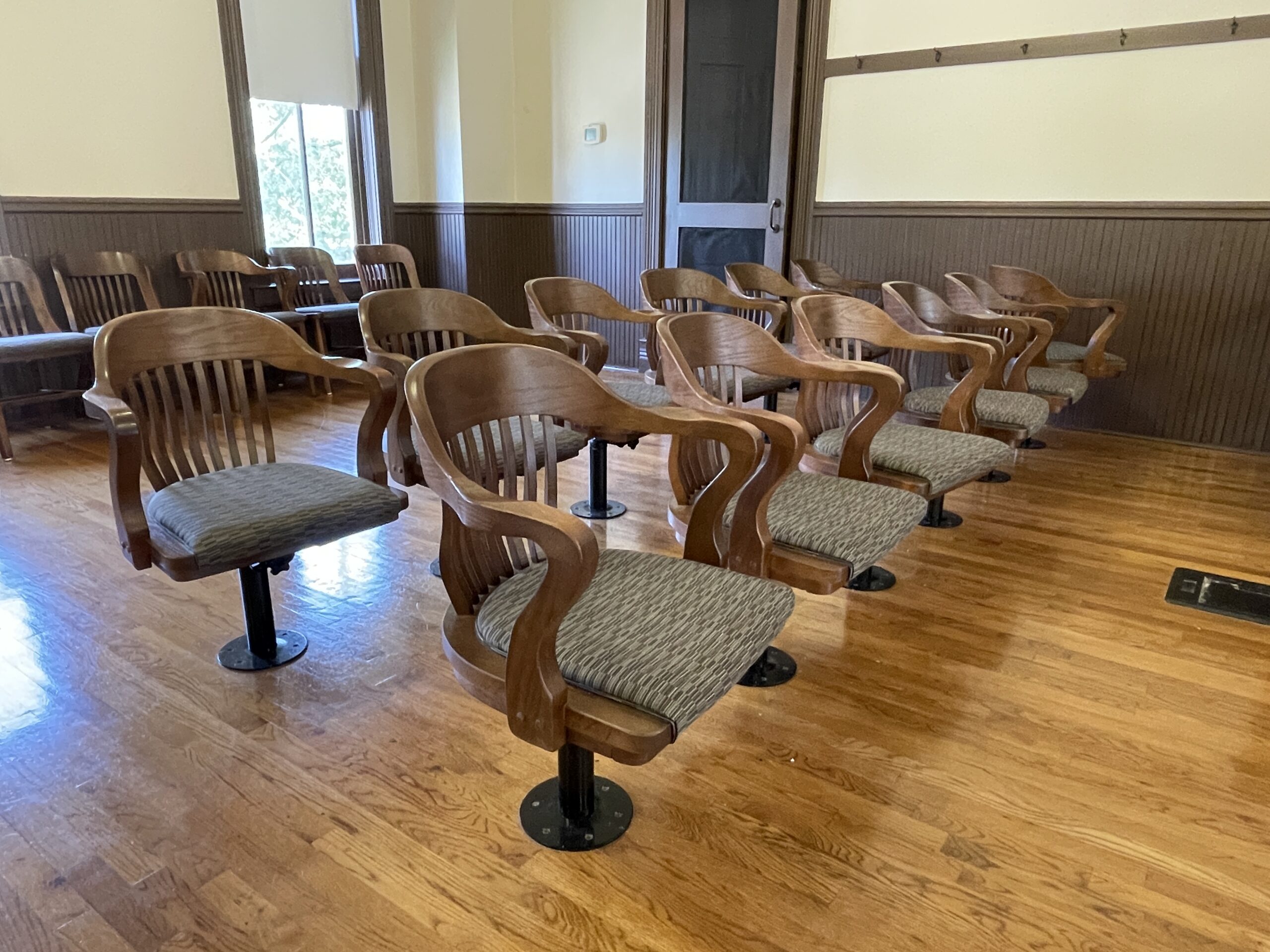
The national monument headquarters lies 12 miles away in Sumner, home to the Tallahatchie County Courthouse.
Mississippi prosecutors quickly arrested two men for Till’s murder and within a month, they were put on trial here. For several weeks in 1955, the county seat became the focus of global attention.
Today you can tour the restored brick courthouse and the Emmett Till Interpretive Center, an official nonprofit partner of the monument. At the Center, you’ll find newspaper clippings and photos from the trial.
The courtroom itself looks stately, but it was home to a gross misjustice.
The trial of Roy Bryant and his half-brother J.W. Milam was an international spectacle with reporters coming from around the world.
During the trial, the all-white jury and defendants joked and smiled. To make sure jurors understood they were under scrutiny, the Ku Klux Klan burned a cross outside the Delta Inn, the hotel where they were sequestered. An historic marker once stood outside the ruins of the building, but was removed by vandals.
One of the most memorable moments in the trial came with Emmett’s grand-uncle Rev. Moses Wright testified and identified Bryant and Milam as the men who had abducted the child from his home in the middle of the night. In 1950’s Mississippi, a Black man wasn’t supposed to accuse a White man of a crime. But Wright memorably stood up and pointed his finger at the murderers. He understood the implications and left Mississippi within days to move to Illinois.
After five days of testimony, the jury took 66 minutes to find the men innocent. Jurors later said they took a Coke break before returning the verdict because they wanted to appear to have deliberated.
A few months later, Bryant and Milam admitted in a paid interview in Look magazine that they indeed had killed Till.
The courthouse remains largely the same. You can see the 12 chairs where the jury sat, and the witness box where Wright stood.

Other Emmett Till sites
After it was recovered, Emmett’s body was taken to the Tutwiler Funeral Home in another tiny town, just north of Sumner.
In a sense, this is where the civil rights movement started. Shortly before the child was to be buried in Mississippi, his mother insisted she wanted the body to come back to Chicago. That required embalming. And because the body was preserved, Till-Mobley was able to take the courageous step of having an open casket.
Like a modern-day police shooting video, casket photos showed the brutality of the killing. And when they appeared in Jet magazine, the nation was shocked.
Other sites include: J.W. Milam’s house in Glendora, where Emmett may have been tortured before he was killed, and nearby Kings Place, a bar where a Black journalist learned about other potential accomplices in the murder.
You can also see the ruins of the funeral home where Emmett’s body was taken, and the remains of the hotel where jurors stayed.
Sturdivant Plantation is another controversial site, where some believe Emmett was tortured and murdered. Located about 30 miles west of Glendora near the town of Drew, it’s on private property and unmarked. But to find it, search Google maps for “Milam Plantation Seed Barn”
Guidebook
Services are limited in the Mississippi Delta.
About your only lunch choice in the immediate area is the Sumner Grille in Sumner.
As for lodging, if you’re not driving on to Jackson or Memphis, you’ll want to stay in Greenwood or Clarksdale, which has several Blues sites, including actor Morgan Freeman’s Ground Zero Blues Club, with music and food.
In Greenwood, try the Alluvian, a boutique hotel renovated by the local Viking Range Corp. It has won national attention for design, and the Mississippi art gracing the walls. Book a room here.
While not as fancy, the city’s Hampton Inn is still comfortable. Book a room here.
In Clarksdale, you’ll find chain hotels, inns and B&Bs.
The Travelers Hotel, an artist-run boutique lodging, has a communal kitchen and gets top ratings. Book a room here.
For a fun vibe and a chance to meet other travelers, try the Auberge Clarksdale Blues Hostel, with both dorm-style lodging and private rooms. Book here.
As for the chains, the Hampton Inn, with wifi, breakfast and outdoor saltwater pool, gets top ratings. Book a room here.


